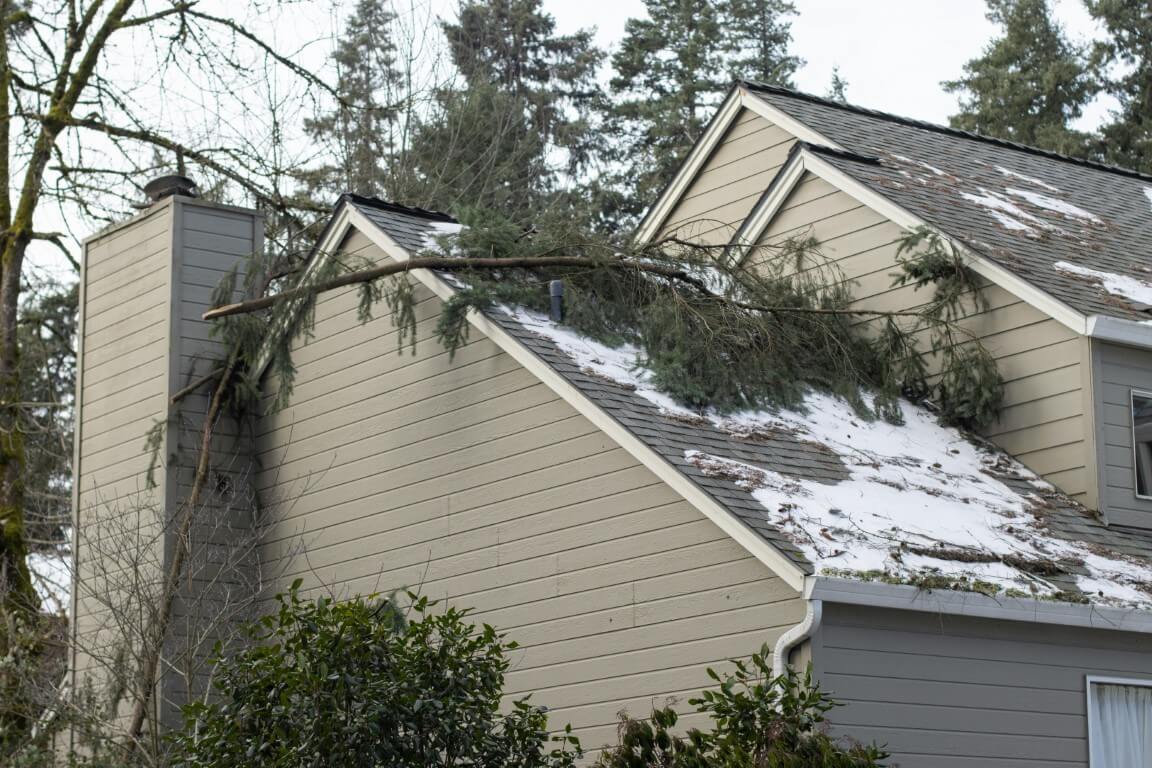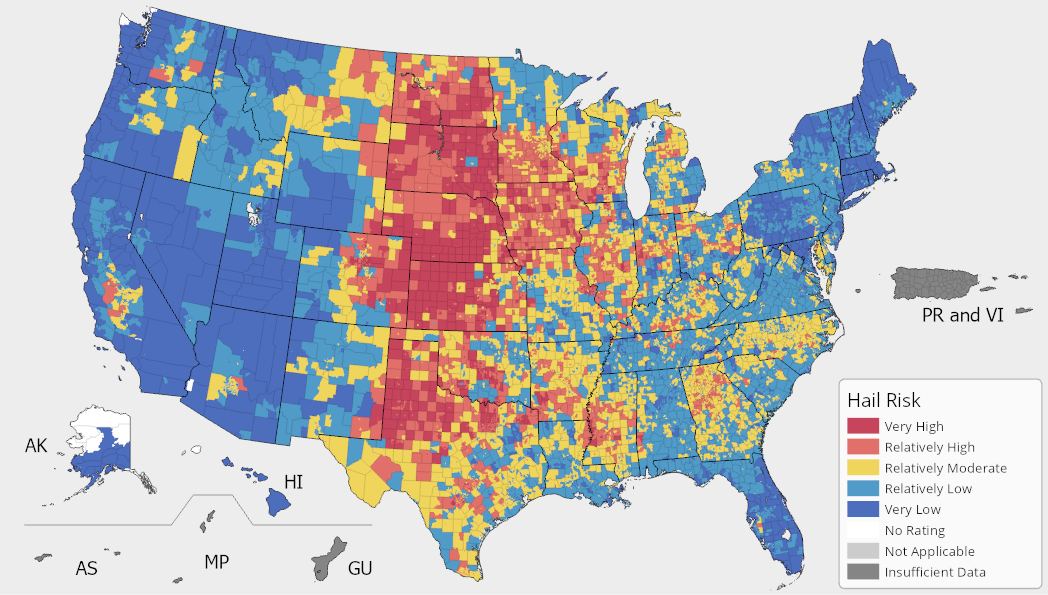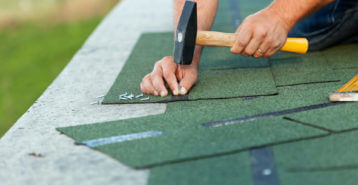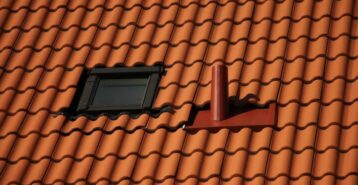Impact-Resistant Roofing: Summary
Impact-resistant roofing is designed to hold up against hail and flying debris. This is ideal for homeowners in storm-prone regions. While various roof materials can be considered impact-resistant, reinforced asphalt shingles are the most commonly associated with the term. They are tested and rated on a scale from Class 1 to Class 4, with Class 4 offering the highest level of protection.
They cost 10% to 25% more than regular shingles, but they often last longer, need fewer repairs, and can qualify you for insurance discounts. Homeowners in areas with mild storms may not need to upgrade, but some people like to anyway for added peace of mind.
Keep reading to learn more about this roof type, or click below to get connected with local contractors and start your roofing project.
What Is an Impact-Resistant Roof?
Impact-resistant roofs are designed to withstand damage from severe weather, especially hail and flying debris. These roofs are usually built using reinforced asphalt shingles that resist cracking, tearing, or denting when hit by falling objects.
These shingles are tested and rated based on their durability using the UL 2218 or FM 4473 tests. These tests are meant to mimic the impact of hailstones. Depending on how well the shingles hold up, they are classified between 1 and 4, with Class 4 being the most impact-resistant.
» Learn about recommended roof types for other climates in our guide to the best weather-resistant roofing materials.

What Does Class 4 Impact-Resistant Mean?
Class 4 shingles pass the toughest tests, meeting the highest impact resistance standards in the UL 2218 and FM 4473 tests.
In the UL 2218 impact resistance test, testers drop steel balls of increasing sizes from various heights. They drop it onto the same spot on a shingle twice to see if the material cracks or breaks. The higher the class, the more impact the shingle can withstand. Here’s the testing standard:
- Class 1. 1.25-inch steel ball dropped from 12 feet
- Class 2. 1.5-inch steel ball dropped from 15 feet
- Class 3. 1.75-inch steel ball dropped from 17 feet
- Class 4. 2-inch steel ball dropped from 20 feet
The FM 4473 test uses ice balls instead of steel, launched at the shingles to replicate the force of actual hail. It follows the same size standards and also requires the shingle to show no cracking after two impacts in the same location.
What Roof Materials Are Impact Resistant?
While asphalt shingles are the most commonly associated with impact-resistance ratings, most other roof materials have a strong rating. These include metal, concrete, slate, clay, and rubber. But as with asphalt shingles, the thickness and quality of the material determine its impact resistance.
Who Needs Impact-Resistant Shingles?
If you live in a place that often gets hailstorms or strong winds, like the Great Plains (aka “Hail Alley”) or the East Coast from southern Pennsylvania to northern Florida, impact-resistant shingles are a good idea. They help protect your roof from hail damage, saving you money on repairs and insurance claims.

Source: FEMA.gov
Even if you don’t live in these areas, if your home is surrounded by tall trees or near construction zones, these shingles can offer extra protection from falling branches or debris.
Is It Worth Upgrading to Class 4 Shingles?
Upgrading to Class 4 shingles can be beneficial, especially in a high-risk area. Benefits include:
- Enhanced Protection: Reduced damage from hail and debris.
- Insurance Discounts: Some insurers offer premium reductions for Class 4 roofs.
- Longevity: Extended roof lifespan, decreasing the frequency of replacements.
However, if you live in an area with mild weather, you might not need to spend the extra money.
Pros and Cons of Impact-Resistant Roofing
Before deciding whether impact-resistant shingles are right for your home, it helps to understand the benefits they offer and the potential drawbacks to consider:
Benefits
- Durability in Severe Weather: Class 4 impact-resistant shingles are built to withstand hail, wind-driven debris, and other severe weather elements.
- Insurance Savings: Many insurance providers offer discounts to homeowners who install impact-resistant roofing, especially in storm-prone states.
- Longer Roof Lifespan: These shingles are tougher and resist weather damage, so they usually last longer than regular asphalt shingles.
- Less Frequent Maintenance: With a tougher construction, these shingles are less prone to cracking, granule loss, and other issues that can lead to ongoing maintenance needs.
- Wide Range of Design Options: Impact-resistant shingles come in various styles and colors, so you don’t have to sacrifice aesthetics for performance.
Drawbacks
- Higher Upfront Cost: Impact-resistant shingles typically cost more than standard shingles.
- May Be Overkill in Some Areas: If you live in a region without much severe weather, the extra investment may not be worthwhile.
- Not All Insurance Discounts Are Equal: While some insurers offer premium reductions for impact-resistant roofs, others may not provide a discount at all.
Does Impact-Resistant Roofing Cost More?
Yes, impact-resistant shingles typically cost more than standard ones. Here’s a general comparison:
- Class 4 Impact-Resistant Shingles: Typically cost between $5.00 and $8.50 per square foot to install (labor + materials)
- Standard Asphalt Shingles: Usually range from $3.50 to $7.00 per square foot to install (labor + materials)
For a 2,000-square-foot roof, most homeowners spend $4,000 more on Class 4 impact-resistant shingles than on standard shingles. However, potential insurance discounts and fewer repair costs can make up for the higher initial price over time.
If you’re not sure whether impact-resistant shingles are worth it for your home, a local roofing contractor can help you understand your options to make an educated choice.
FAQ: Impact-Resistant Shingles
What does Class 4 impact-resistant mean?
Class 4 is the highest rating for shingle impact resistance. It means the shingle can withstand a 2-inch steel ball dropped from 20 feet without cracking or breaking. This rating indicates strong protection against hail and debris.
Are Class 4 shingles worth the money?
If you live in an area prone to hail or severe storms, Class 4 shingles can save you money in the long run by reducing repair costs and possibly lowering your insurance premiums.
How much does a Class 4 roof save on insurance?
Savings vary by insurer and location, but some homeowners report up to a 35% reduction on their premiums. Check with your insurance provider to see what discounts are available.
What is the life expectancy of Class 4 shingles?
Class 4 shingles often last longer than standard shingles, with lifespans ranging from 30 to 50 years, depending on the brand and environmental conditions.






